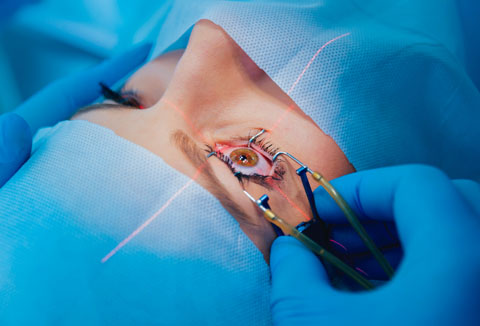 Myopia, commonly called nearsightedness, is the inability to see objects that are far away from you. It affects about 50 percent of the world's population. That's 3.8 billion people!
Myopia, commonly called nearsightedness, is the inability to see objects that are far away from you. It affects about 50 percent of the world's population. That's 3.8 billion people!
The condition can be corrected with contact lenses or eyeglasses, but many people opt for laser surgery to correct their vision. Read on to learn how Dr. Anderson at Anderson Ophthalmology Clinic can help improve this condition while ensuring your good eye health.
What Causes Myopia?
Myopia occurs when the eyeball is abnormally elongated. This causes a refractive error, meaning objects viewed from distance are blurry. The object comes into better focus as it becomes closer. As a practical example, you would not be able to read a street sign clearly from a distance, but the letters would come into focus as you got closer.
What Is the Treatment for Myopia?
Prescriptive lenses in eyeglasses or contacts are the primary methods to treat myopia.
Eyeglasses are the easiest way to sharpen your vision. A wide variety of eyeglass frames are available, and lenses include single-vision as well as specialty lenses that allow you to both see clearly at a distance and up close.
Contact lenses sit directly on your eye. They are available in many materials, including multifocal designs. Dr. Anderson can discuss the type of contact lenses that would be best for your eyes.
Myopia is corrected only when you're wearing the lenses. When you take off your glasses or remove your contacts, you will not be able to see clearly at a distance.
Surgery for Myopia
Many people opt for laser surgery to permanently correct myopia. Technically called refractive surgery, the procedure eliminates or reduces your need for prescriptive lenses. Dr. Anderson uses a laser beam to reshape the cornea. This reduces the curve of a cornea that is elongated, thus making the eye better able to focus.
There are three primary types of refractive surgery:
Laser-assisted in situ keratomileusis (LASIK). A laser is used to flatten the cornea's elongated shape. Recovery is quick and results in little to no discomfort. This is the most common type of refractive surgery.
Laser-assisted subepithelial keratectomy (LASEK). The cornea's outer layers are reshaped, which flattens the curve.
Photorefractive keratectomy (PRK). Similar to LASEK, but Dr. Anderson does not replace the epithelium. It grows back as your eye heals, adhering to the reshaped cornea.
We'd love to discuss refractive surgery for myopia with you. Contact us today at 800-462-8749 for an appointment!

